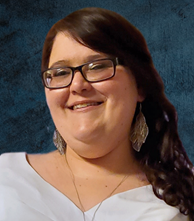If you hope to sell your products or services to a global audience, you need a multilingual website. Let’s review what a multilingual website is, the data showing why businesses need to adapt, and some optimization tips.
What is a multilingual website?
A multilingual website offers content in more than one language. For example, many organizations in the hospitality industry have multilingual websites to entice international travelers to choose their destination, accommodation, or attraction.
Why should you offer a multilingual website?
Simply put, websites that include content in multiple languages appeal to a much wider audience, creating new prospects and opportunities.
Did you know about 47% of global internet users are non-English speaking? Statista reports that only 25% of internet users are native English speakers, meaning 75% of people online have a different primary language. A multilingual website can help you reach far more consumers worldwide.
Businesses should adapt their websites to match consumer preferences.
According to multiple research studies, customers want to learn about a product or service through content in their primary language:
- 65% of customers prefer content in their language, even if it’s poor quality. In addition, 73% want product reviews in their language, if nothing else.
- Given a choice between buying two similar products, 76% of customers will choose the product with information in their native language.
- A Gallup survey on language preferences revealed that 9 out of 10 internet users preferred to visit a website in their own language whenever given a choice. Plus, 19% of those surveyed never browse in a foreign language, and 42% never make any purchases in languages other than their own.
- 56.2% of surveyed European consumers said obtaining information in their own language is more important than the price.
Beyond improving your brand image, customer centrism, and personalization, there are other benefits to providing a multilingual website.
- The Fortune 500 companies actively expanding translation budgets are 5 times more likely to report an overall revenue increase.
- Content marketing on your site typically costs 62% less than other traditional marketing efforts and generates approximately three times as many leads.
Optimization tips for multilingual websites
Let’s review some tips and tricks to optimize your website content for multiple languages.
How many languages should your site offer?
- The languages you offer should correlate with the markets you want to capture. Spanish and Mandarin/Cantonese are common languages to begin the process, but you’ll need to go beyond that for the best results.
- To compete for 90% of online business opportunities, companies should provide 13 languages: English, German, French, Italian, Spanish, Chinese, Japanese, Korean, Portuguese, Dutch, Arabic, Russian, and Swedish. CyraCom offers competitive per-word pricing for all these languages and more.
Which elements of your site should be translated & localized?
- Use simple, informative language that sounds native to local customers. Localizing content builds trust in your brand and helps you avoid embarrassing mistranslations often found in translations completed by machines. CyraCom uses professional human linguists who are also subject matter experts who can help ensure your content comes across right for the culture you’re trying to reach.
- If your site includes charts, diagrams, or other images with critical information, the text within the imagery should also be translated.
- You can structure your site’s translated pages using separate domains or sub-domains, subfolders, or URL extensions. SEO and user experience both suffer when you include all languages on the same page.
How do I differentiate target keywords/key phrases for a multilingual website?
- Adapt content for each language to increase your website’s search engine visibility. For example, American English speakers typically use “vacation,” “getaway, ”or “trip” rather than UK English speakers’ preference to go on “holiday.” English searches for “last minute holiday” or “weekend getaway” may not have the same feeling or meaning when translated into other languages. CyraCom’s translation and localization team can help you with these optimal word choices for the languages you are targeting.
- According to Ahrefs’ SEO tips, “When doing multilingual keyword research, it’s best to use both the properly accented variant and a variant with no accents. For example, if you want to check the search volume for the French word for SEO, you’re best off looking up “référencement” and “referencement” (with no accents).”
- Remember, Google isn’t the only search engine out there. For example, Google isn’t the dominant search engine for China (Baidu), Russia (Yandex), and South Korea (Naver). You may need to modify optimization practices if you’re heavily targeting consumers in these countries.
What other optimizations will improve a multilingual website’s user experience?
- Review the design and layout of your translated landing pages to verify your content is still neat and organized. For example, many German words are longer than English words, so text may expand and rearrange other page elements. CyraCom will deliver a finished project with these details taken into account.
- Consider the currencies and payment methods foreign prospects are most familiar with and include their most trusted options whenever possible.
Want help translating and localizing your website?
Contact our team at translation@cyracom.com to get started.










